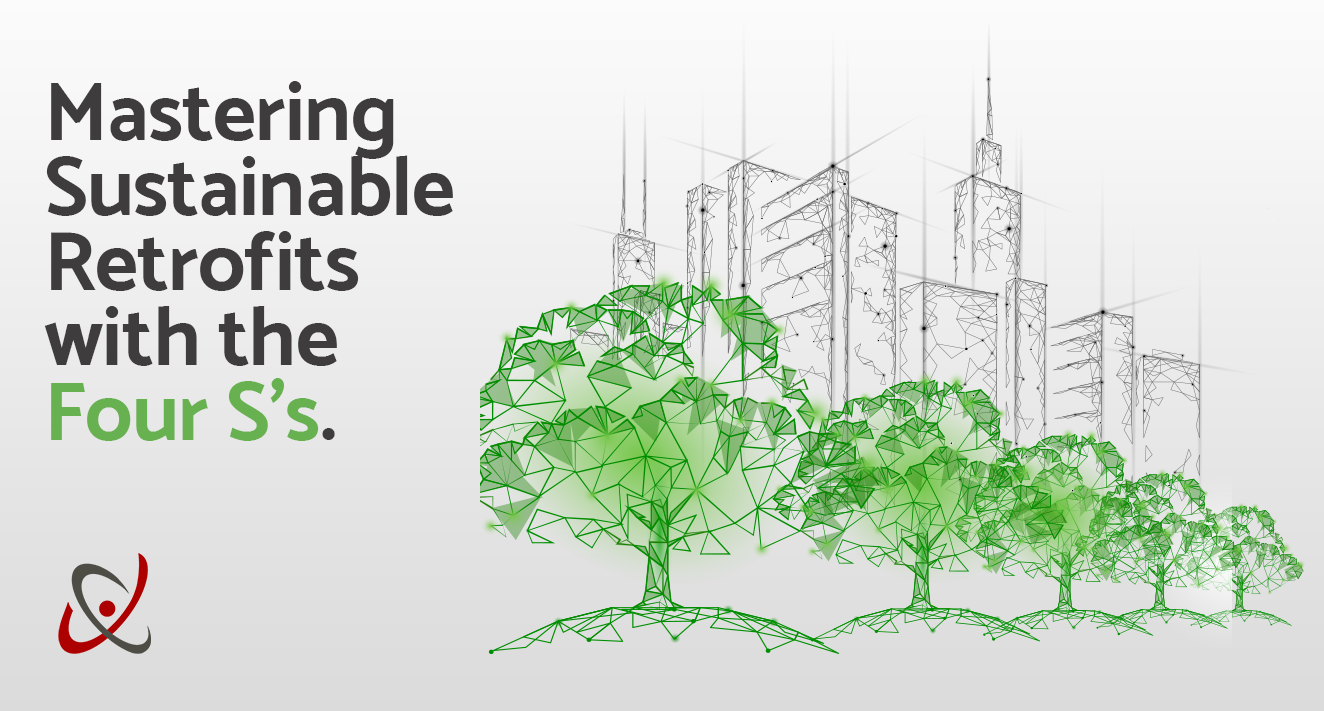Mastering Sustainable Retrofits with the Four S's
Sustainability is a buzzword that can create confusion for property owners and facility managers when determining the right approach to retrofitting buildings to make them more sustainable. At Jackson Control, we've created an attainable retrofit plan to reduce operational costs in your HVAC and IoT assets, by focusing on four fundamental steps. These four steps form the foundation for achieving sustainable building retrofits.
1. Sensors: The First Building Block
We begin by looking at the accuracy and consistency of the sensors within your building systems. In today's digital age, manual monitoring of room temperatures and system pressures is impractical due to the sheer number of devices in a building. Ensuring digital records of sensor data is critical, as this data underpins subsequent steps.
Consider these examples:
1. A malfunctioning temperature sensor erroneously reads a room temperature of 900 degrees Fahrenheit. While humans know this is impossible, the automated system reacts by initiating full cooling, leading to unnecessary pressurization of the chilled water system and the activation of pumps. All this chaos stems from a single faulty $50-$300 temperature sensor.
2. In a system aimed at energy optimization, a property's RTU is indicated as "on" every minute of every day. Relying on this optimization for ROI, a site visit reveals that the fan status sensor was defective, falsely indicating the RTU's constant operation. The sensor failed, but the RTU was scheduled, resulting in lost savings and trip costs.
A quality-maintained sensor network is vital to making realistic recommendations and automating processes effectively. This step may seem simple, but it is critical and requires ongoing diligence.
2. Setpoints: More Than Just Thermostat Settings
Now that we have accurate data gathered from sensors, we can use this data to ensure two aspects:
1. Achieve setpoints. Achieving setpoints is fundamental for controllers and mechanical systems to carry out instructions effectively.
2. Leverage setpoints. Implement a setpoint control strategy for comfort and occupancy, using sensor data to determine temperature ranges for occupied, unoccupied, and standby modes.
3. Schedules: The Power of Automation
Schedules, often perceived as more effective than they are, become crucial in energy conservation once we've established a solid foundation. After gaining insights into what we're controlling and how controls respond, the critical step is to minimize equipment usage when not required. Schedules automate turning systems on and off based on building needs. Understanding the building's ability to achieve comfort and functionality setpoints allows us to reduce system demands, avoiding common challenges like system recovery difficulties.
Before progressing to the fourth "S," let's revisit the requirements of the initial three fundamental activities and their intended outcomes:
1. A high-quality sensor data network with accurate information is essential. This data drives sequences that impact all system goals. In most portfolios, you'll find thousands of these sensors.
2. Setpoint achievement and validation, essentially continuous commissioning, ensure that airflow setpoints remain unaltered and are achieved, as do boiler supply temperatures, across numerous zones and assets.
3. Equipment scheduling aims to minimize runtime while achieving goals, akin to efficient labor management in a business. This aligns with how we should treat our mechanical assets.
Achieving consistency in these initial three "S's" is challenging for most buildings today. However, mastering them paves the way for addressing the fourth "S."
4. Sequences: Intelligent Logic for Efficiency
The fourth and final step involves complex logic sequences like Demand Control Ventilation and Static Pressure Resets. These sequences optimize energy usage but are more complex to manage. They rely heavily on the accuracy of sensor data and the successful implementation of the first three S's.
Mastering these steps is a big challenge, particularly at scale. Yet, it's a journey worth embarking on to achieve sustainability and cost reduction.
At Jackson Control, we're committed to helping you retrofit your buildings sustainably. We offer access to accurate sensor data, expertise in setpoints and scheduling, and industry knowledge to implement effective sequences. Reach out to us to learn how the Four S's of sustainability can transform your portfolio and contribute to a greener planet.
Steven Crowe

